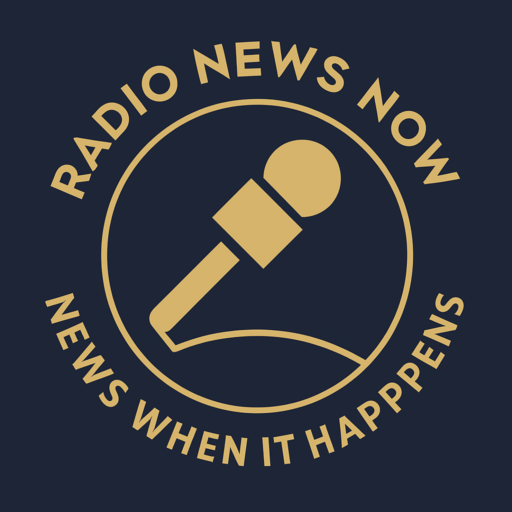By: Lee Michaels – Radio News Now
Choosing the right microphone is one of the most important decisions you’ll make as a content creator. Whether you’re podcasting, live-streaming, voice-tracking a radio show, or recording interviews, your mic defines your audio quality, your professionalism, and your listener experience.
Good news: You don’t have to spend $500–$1,000 to sound like a pro.
Below are 7 top microphones under $300 that consistently perform across radio, podcasting, and live streaming — trusted by pros, reviewers, and broadcasters alike.
🎙️ 1. Shure MV7
Price: ~$249
Type: Dynamic
Connection: USB + XLR
Best For: All-purpose creators, hybrid setups
✅ Why It’s Great:
- Inspired by the legendary Shure SM7B (used in top studios)
- USB and XLR outputs allow flexibility for beginners and pros
- Built-in touch panel for gain, volume, and mute
- Includes Shure MOTIV app with EQ presets, auto-leveling, and live monitoring
🔈 Ideal Use:
- Podcasters needing studio sound at home
- Streamers upgrading from USB-only models
- Radio hosts needing a broadcast-style tone with flexibility
⚠️ Consider:
- Dynamic mic means closer mic technique is required
- May benefit from a boom arm (not included)
🎙️ 2. Audio-Technica AT2040
Price: ~$99
Type: Dynamic
Connection: XLR
Best For: Budget radio/podcast studios
✅ Why It’s Great:
- Broadcast-quality dynamic mic at an entry-level price
- Tight hypercardioid pattern = great background noise rejection
- Designed for spoken voice with warm, low-end tone
🔈 Ideal Use:
- Home-based radio talent
- Budget podcast studios using XLR interfaces
- Multi-mic panel setups
⚠️ Consider:
- XLR only — requires an audio interface
- No onboard volume/gain control
🎙️ 3. Rode PodMic
Price: ~$99
Type: Dynamic
Connection: XLR
Best For: Podcasters and radio shows on a budget
✅ Why It’s Great:
- Rugged all-metal build built for studio abuse
- Clear, mid-range focused sound perfect for spoken word
- Designed to match perfectly with the RodeCaster Pro II
🔈 Ideal Use:
- Multi-mic podcasting setups
- Panel interviews
- Radio teams with a RodeCaster setup
⚠️ Consider:
- XLR only
- Requires close mic positioning
🎙️ 4. Elgato Wave:3
Price: ~$149
Type: Condenser
Connection: USB-C
Best For: Streamers and solo podcasters
✅ Why It’s Great:
- Designed for streaming and gaming, but great voice clarity for podcasting too
- Wave Link software acts like a digital mixer
- Built-in clip guard to prevent peaking
- Sleek, minimal design with capacitive mute button
🔈 Ideal Use:
- Solo streamers on Twitch or YouTube
- Beginner podcasters without an interface
- Voiceover artists
⚠️ Consider:
- Condenser mic = picks up more room noise
- Not ideal for untreated or noisy environments
🎙️ 5. Samson Q9U
Price: ~$199
Type: Dynamic
Connection: USB-C + XLR
Best For: Flexible creators in hybrid setups
✅ Why It’s Great:
- Clean sound with deep low end, great for radio voices
- USB + XLR = great for growing with your gear
- Built-in headphone output with zero-latency monitoring
- Optional high-pass filter and mid boost switches
🔈 Ideal Use:
- Radio personalities working remotely
- Podcasters planning to upgrade gear later
- YouTubers and streamers needing warm, broadcast tone
⚠️ Consider:
- Slightly bulkier than others
- Needs external software to fine-tune settings via USB
🎙️ 6. Blue Yeti X
Price: ~$169
Type: Condenser
Connection: USB
Best For: Beginners and all-in-one streaming setups
✅ Why It’s Great:
- Plug-and-play with multiple polar patterns (cardioid, omnidirectional, etc.)
- Excellent for solo, group, or remote podcast interviews
- Voice metering LED ring and gain control on the mic
- Works seamlessly with Blue VO!CE effects
🔈 Ideal Use:
- Podcast interviews
- Twitch and YouTube streamers
- Live call-in shows
⚠️ Consider:
- Desktop stand is not ideal — a boom arm improves results
- Condenser design is sensitive to room acoustics
🎙️ 7. Heil PR-40 (My Favorite)
Price: ~$299
Type: Dynamic
Connection: XLR
Best For: Professional-level radio tone
✅ Why It’s Great:
- Known as a broadcast workhorse (used in many radio stations)
- Excellent low-end response without being muddy
- Internal shock mount and built-in pop filter
🔈 Ideal Use:
- Traditional radio broadcasting
- Professional podcasters or VO talent
- Home studios aiming for commercial-level sound
⚠️ Consider:
- XLR only
- Needs a good interface and preamp (some setups may need gain boost)
🔊 Quick Comparison Table
| Mic Model | Type | USB/XLR | Best For | Est. Price |
|---|---|---|---|---|
| Shure MV7 | Dynamic | USB + XLR | All-purpose creators | $249 |
| AT2040 | Dynamic | XLR | Budget podcasting/radio | $99 |
| Rode PodMic | Dynamic | XLR | Studio setups (RodeCaster users) | $99 |
| Elgato Wave:3 | Condenser | USB-C | Streamers, solo podcasters | $149 |
| Samson Q9U | Dynamic | USB + XLR | Radio-quality at home | $199 |
| Blue Yeti X | Condenser | USB | Beginners & flexible recording | $169 |
| Heil PR-40 | Dynamic | XLR | Broadcast-quality radio sound | $299 |
🧠 Final Thoughts: Which One Should You Get?
- For flexibility & future-proofing: Go with the Shure MV7 or Samson Q9U
- For budget studio setups: AT2040 or Rode PodMic deliver big value
- For livestreamers & creators: Elgato Wave:3 or Blue Yeti X is your go-to
- For pro-level radio voice: If you’re serious, invest in the Heil PR-40
🎙️ What mic are you using — or thinking about buying? Drop a comment or tag #RadioNewsNow on social media with your setup and sound samples. We’ll feature the best listener gear in an upcoming post.
— Lee Michaels
Founder, Radio News Now

